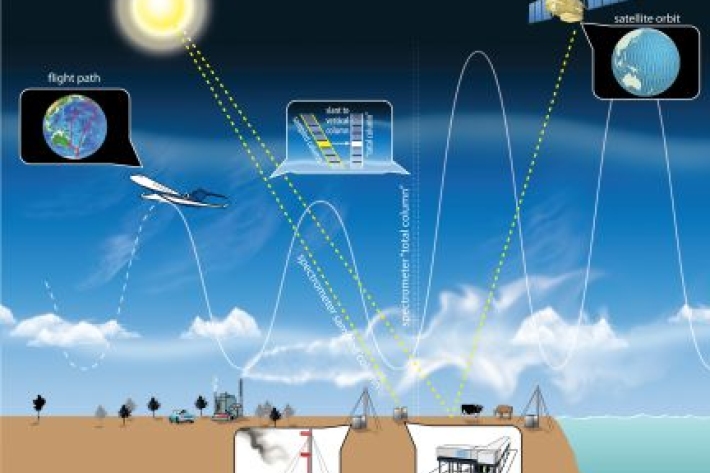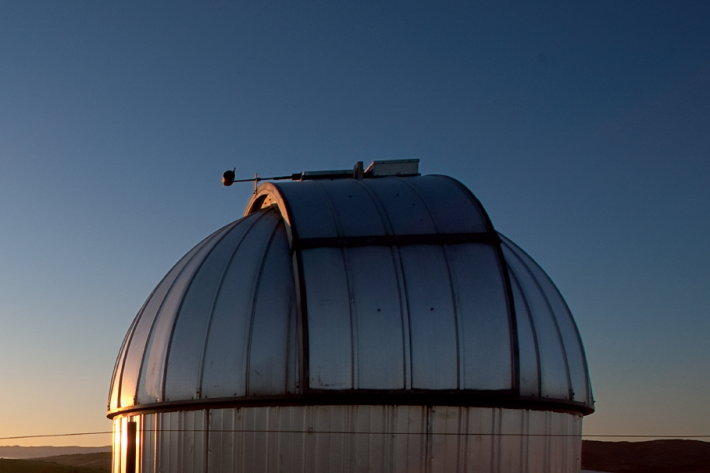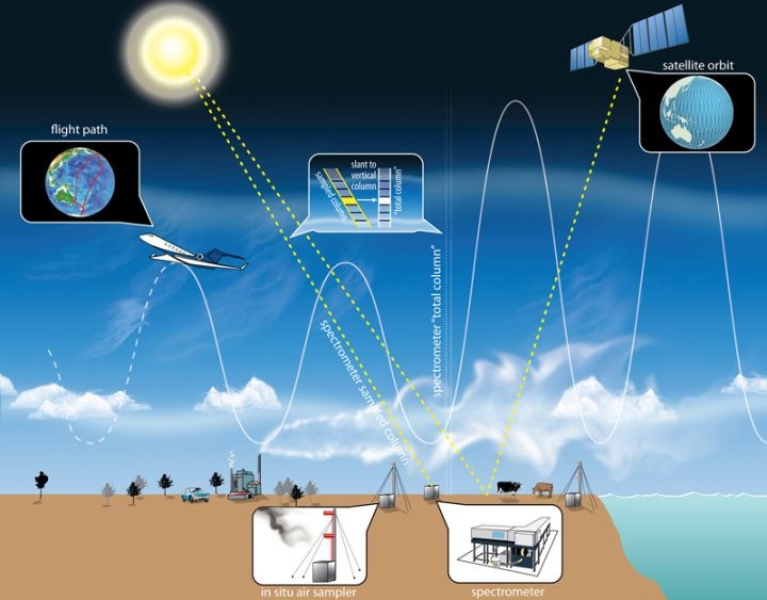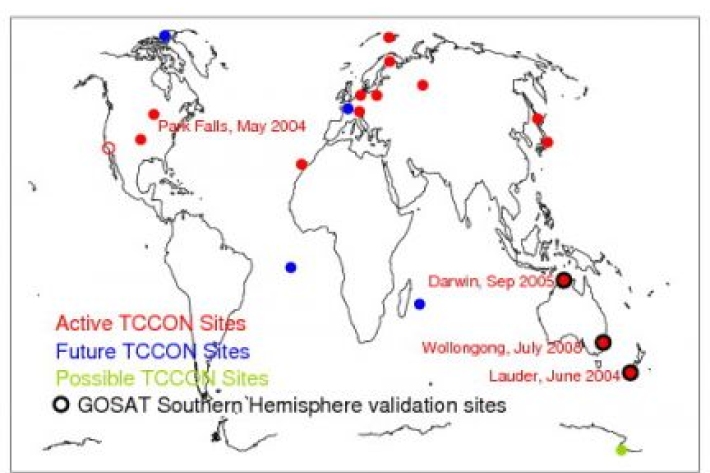NIWA participates in the Total Carbon Column Observing Network, a ground-based observing network dedicated to making precise and accurate measurements of greenhouse gas concentrations in different parts of the atmosphere.
The problem
A major challenge in climate science is to understand the fate of the approximately 30 billion tons of carbon dioxide emitted each year as a result of human activities (such as motor vehicles, factories, and deforestation).
Climate scientists need to advance their ability to observe and model concentrations of greenhouse gases in the atmosphere to:
- make more accurate predictions of future atmospheric composition, and associated effects on the Earth’s climate
- estimate anthropogenic (human-induced) emissions of greenhouse gases at regional or national scales to quantify the effectiveness of measures to reduce emissions.
TCCON project glossary for explanations of terms used on this page
Surface gas measurements can be made very precisely and accurately. But it’s difficult to calculate surface fluxes from these measurements (e.g. to infer carbon emissions) because of atmospheric mixing. Total column measurements of gases can address this problem because they are relatively insensitive to atmospheric mixing.
Total column measurements of gases:
- Calculate the total amount of a particular gas in a virtual column of air extending from the Earth’s surface to the top of the atmosphere.
- Are made by remote sensing using Fourier Transform Spectrometers on the ground, or borne by satellite.
Recent satellite projects making total column measurements include the Japanese Greenhouse Gases Observing Satellite (GOSAT), launched in January 2009, the European Space Agency’s SCIAMACHY satellite instrument, and the Orbiting Carbon Observatory-2 (OCO-2) which was launched in July 2014.
There is particular interest in satellite-based total column greenhouse gas measurements because they offer unprecedented resolution over space and time. In principle, this will enable scientists to estimate surface fluxes - and hence sources and sinks - of greenhouse gases at regional scales (around 1000 km2).
To achieve this, the satellite-based total column measurements must be very precise, and calibrated to the World Meteorological Organization (WMO) reference scale for greenhouse gases.
The approach
TCCON is a global network (established in 2004) of ground-based solar Fourier Transform Spectrometers (FTS), each placed alongside in situ surface gas analysers. Together, these provide very precise and accurate measurements of the column amounts and surface concentrations of key greenhouse gases:
- carbon dioxide (CO2)
- methane (CH4)
- nitrous oxide (N2O)
- carbon monoxide (CO).
TCCON contributes to improved understanding and monitoring of the global carbon cycle and greenhouse gas emissions in two ways:
- indirectly, through validation of CO2 and CH4 satellite-based total column measurements from GOSAT, SCIAMACHY, and OCO-2.
- directly, by using co-located column and surface in situ data to look at how good the mathematical models are at calculating gas concentrations, surface fluxes, and atmospheric mixing.
Ground-based measurements from the Southern Hemisphere TCCON sites play a key role in validating the GOSAT CO2 and CH4 and OCO-2 CO2 column measurements. This is because the sites span a range of latitudes and atmospheric variability is low in the Southern Hemisphere.
Calibration by instrumented aircraft overpasses
TCCON has unprecedented requirements for measurement accuracy (lack of bias) and precision (repeatability). To achieve this, TCCON column measurements are calibrated to the WMO greenhouse gas reference scale [by overpasses of aircraft equipped with in situ gas analysers].
Calibration of NIWA's Lauder TCCON measurements is undertaken within the framework of the United States National Science Foundation funded HIAPER Pole-to-Pole Observation of Atmospheric Tracers experiment (HIPPO).
Development of TCCON
Routine TCCON measurements began at the TCCON sites in Park Falls (USA) in May 2004 and Lauder (NIWA, NZ) in June 2004, followed by Darwin (Australia) in September 2005. Since then the network has grown rapidly. In July 2009 the network comprised 14 operational sites in 10 countries. By 2013 the network had expanded to 20 operational sites in 12 countries.
In August 2009, NIWA installed a second state-of-the-art FTS (a Bruker 125hr) at Lauder, dedicated to TCCON measurements.
Links
HIAPER Pole-to-Pole Observation of Atmospheric Tracers experiment (HIPPO)
Schematic of TCCON measurements at Lauder
NIWA's Lauder Atmospheric Research Station
Location of TCCON sites worldwide
Results to date
Since 2004, TCCON partners have identified and corrected significant, systematic measurement biases in the FTS measurements.
Instrumented aircraft overpasses of the Park Falls, Darwin, Oklahoma, Tsukuba, and Lauder TCCON sites enable us to calibrate the FTS measurements on the WMO reference scale.
TCCON data from Lauder and sites worldwide are being used to validate GOSAT CO2 and CH4 column measurements and OCO-2 CO2 column measurements.
In situ and column CH4 measurements at Lauder, in conjunction with other measurements in the southwest Pacific, corroborate changes in the CH4 growth rate observed globally since 2007.
-

Schematic of greenhouse gas measurements at Lauder
-

TCCON project glossary




